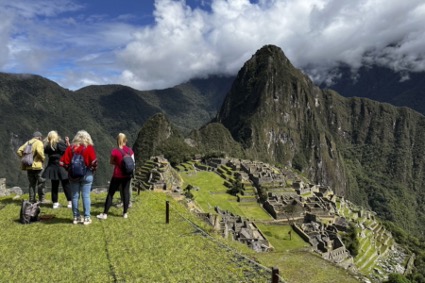
On the occasion of the 17th anniversary of its election as one of the Seven Wonders of the Modern World, the Historic Sanctuary of Machupicchu —located in Urubamba, Cusco region— has once again received the certificate as a Carbon Neutral Destination.
This achievement places Peru at the forefront of environmental sustainability and the fight against climate change impacts.
Our country’s world wonder has received this distinction as a result of the commitment by the public and private sectors, which achieved this valuable result by joining forces.
The driving group was composed of the Municipality of Machu Picchu, AJE Group, Inkaterra, and Tetra Pak. In turn, the allied group was made up of PromPeru, World Xchange, Luz del Sur, Bosques Amazonicos (BAM), Latam, and the National Chamber of Tourism (Canatur).
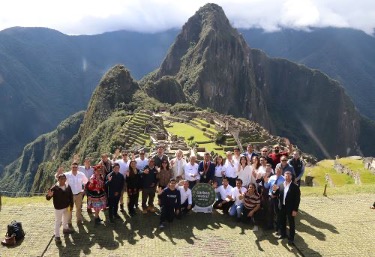
The seal was awarded by Green Initiative, the leading company in the tourism sector’s climate certification, which recognizes the fulfillment of its decarbonization goals.
To achieve this recognition, Machupicchu Historic Sanctuary has adopted effective measures to reduce its carbon footprint and offset remaining emissions, implementing sustainable practices such as solid waste management and circular economy promotion.
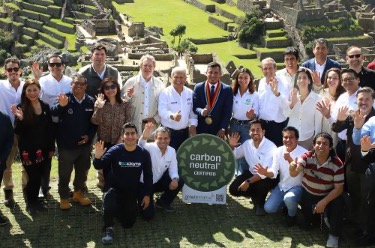
“At PromPeru, we have the firm purpose of contributing to the sustainable and decentralized development of our country,” PromPeru Executive-President Claricia Tirado stated at the ceremony held at Manco Capac Square in Aguas Calientes (Machu Picchu Town) on Thursday.
“All of us who play a role in the public or private sector have the responsibility to ensure that the generated economic benefits are joined by sustainable management,” she added.
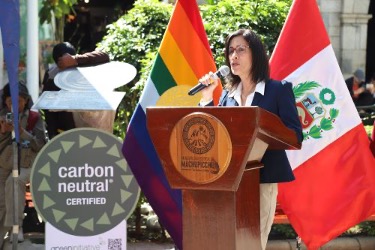
It is important to highlight that the certification took the 2019 carbon emission results as a baseline and focused on fostering actions for the reduction, treatment, and proper management of waste. It also included raising awareness among residents, businesses, and hotels.
In this regard, four processes were implemented to reuse usable waste: the installation of a PET plastic- and cardboard-compacting plant; a biodiesel plant to process waste oil from restaurants and casinos; an organic waste pyrolyzing plant to generate natural charcoal; and two glass crushing machines to convert bottles into grit for construction and ornamental purposes.
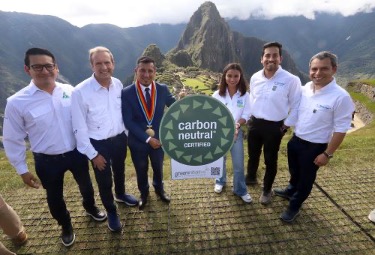
This circular economy model allows for giving a new life to usable waste, such as plastic, cardboard, Tetra Pak containers, and glass, in addition to oil treatment.
“PromPeru continues to promote and work on responsible and sustainable tourism. We know that it’s no longer just a way to differentiate ourselves, it’s a necessity,” the State-run institution concluded.